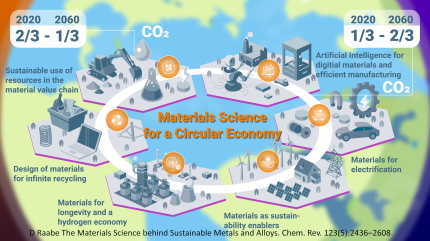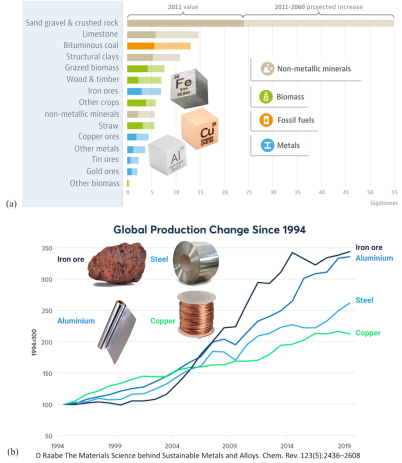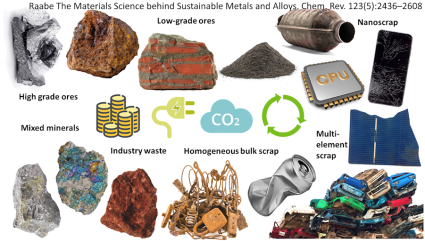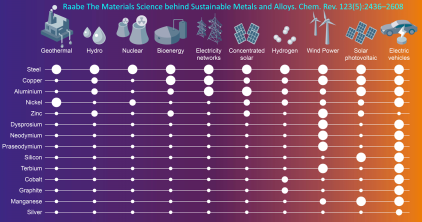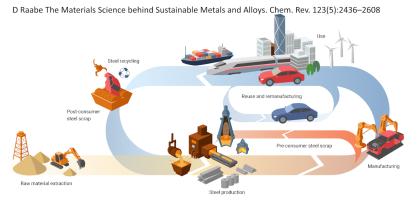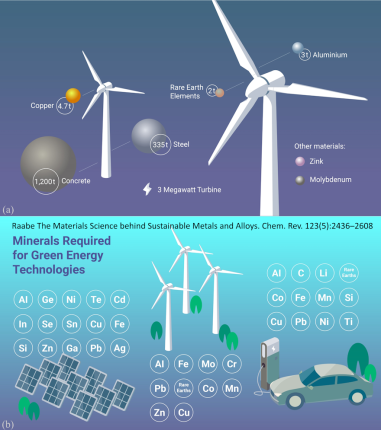Metal and Alloy Demand for Transitioning to a Sustainable Energy System: Metallurgical Perspectives
The transition towards a sustainable energy system, imperative for mitigating climate change, relies heavily on specific metals and alloys which are essential in the manufacturing of renewable energy technologies and energy storage systems. This comprehensive review delves into the metallurgical aspects of sustainable metal and alloy production, focusing on the materials science underpinning these efforts, as outlined in the paper "The Materials Science behind Sustainable Metals and Alloys. Chem. Rev. 123(5):2436–2608". Here, we explore the supply and demand dynamics, metallurgical challenges, and technological advancements necessary to ensure the viability and sustainability of critical materials.
The global shift toward renewable energy and electrification of transport systems has markedly increased the importance of certain metals and alloys. These materials are critical not only for their functional properties but also for their roles in achieving sustainability targets. This review examines the implications of increased demand for these materials, the challenges in sourcing and processing them, and the innovations required to sustainably meet future needs.
Key materials such as copper, aluminum, nickel, lithium, cobalt, and rare earth elements (REEs) are scrutinized for their unique properties that make them indispensable in renewable energy technologies. For example, copper’s superior electrical conductivity makes it essential for electric wiring in solar panels and wind turbines. Aluminum, being lightweight and corrosion-resistant, is favored in the structural components of renewable energy systems.
The metallurgical properties of these metals, including their mechanical behavior, corrosion resistance, and workability, are critical in determining their suitability for various applications. The article discusses the alloying, thermal treatments, and processing methods that enhance these properties to meet the stringent requirements of renewable energy applications.
Using data and forecasts from industry sources, this section estimates the future demand for key metals, driven by global growth in renewable energy deployment and electrification of transport. The
discussion includes growth rates and potential bottlenecks in supply due to geological, geopolitical, or technological factors.
The scalability of metal production to meet rising demands poses significant metallurgical challenges. These include ore beneficiation, extraction efficiency, metal purification, and waste
management. The thermodynamic and kinetic constraints of these processes are analyzed to identify areas where research and technological innovation are critically needed.
Innovative metallurgical techniques that enhance the efficiency and sustainability of metal extraction are explored. This includes bioleaching, solvent extraction, and the use of molten salts for the extraction of REEs and other critical materials.
The development of new alloys designed to improve performance and reduce reliance on scarce materials is another crucial area. The article examines the latest trends in alloy development, including the use of computational methods for predicting alloy properties and the potential of high-entropy alloys in renewable energy applications.
Recycling plays a pivotal role in the sustainable supply of metals. This section details the current state of recycling technologies for key metals and discusses the challenges and opportunities in improving recycling rates and efficiency.

